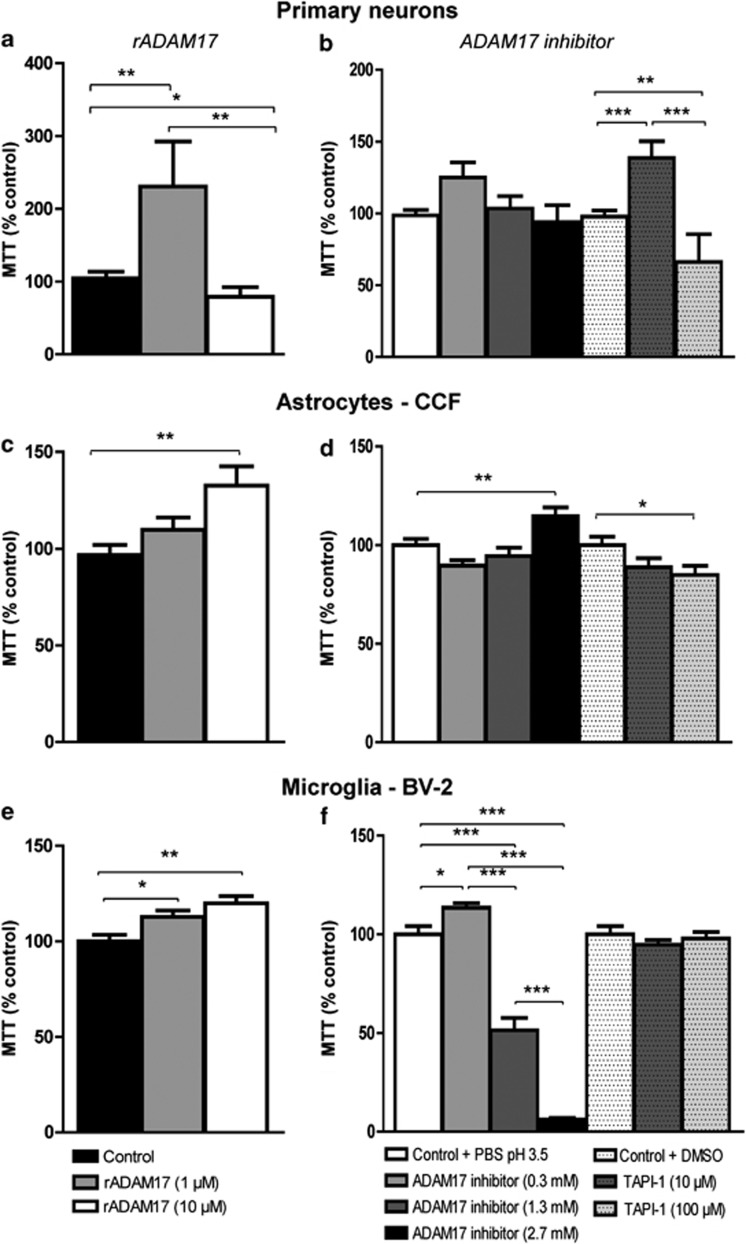Figure 2.
ADAM17 has a concentration-dependent effect on the survival of cortical neurons, astrocytes, and microglia. (a) Cortical neurons were incubated with rADAM17 (1 or 10 μM) for 48 h in the presence of B-27. The lower concentration (1 μM) significantly promotes cell survival while the higher concentration (10 μM) decreases survival. (b) Cortical neurons were treated with three selected concentrations of the ADAM17 inhibitor BMS-561392 and two concentrations of the non-specific inhibitor of ADAM17, TAPI-1. While BMS-561392 did not have an effect on survival, TAPI-1 concentration dependently increased (10 μM) or decreased (100 μM) survival. The values are expressed as percentage of control with B-27 and represent three independent experiments (n=15–21 wells per condition) (*P<0.05; **P<0.01). (c) The astrocytic cell line, CCF, was treated for 48 h with rADAM17. Afterwards, cell survival was measured using an MTT assay. Viability was increased after treatment with 10 μM of rADAM17 (n=15 wells per condition) (**P<0.01). (d) CCF cells were treated for 48 h with BMS-561392 or TAPI-1. CCF cell survival was increased by BMS-561392 (2.7 mM) while TAPI-1 (100 μM) decreased survival (n=15 wells per condition) (*P<0.05; **P<0.01). (e) The microglial cell line BV-2 was treated for 48 h with rADAM17. Cell survival was measured using an MTT assay. Microglial survival was significantly increased after rADAM17 treatment (n=15 wells per condition) (1 and 10 μM; *P<0.05; **P<0.01). (f) Inhibition of ADAM17 by BMS-561392 for 48 h decreased BV-2 cell survival. The results are the mean of three independent experiments and are represented as a percentage of the control condition (n=15 wells per condition) (*P<0.05; ***P<0.001)

